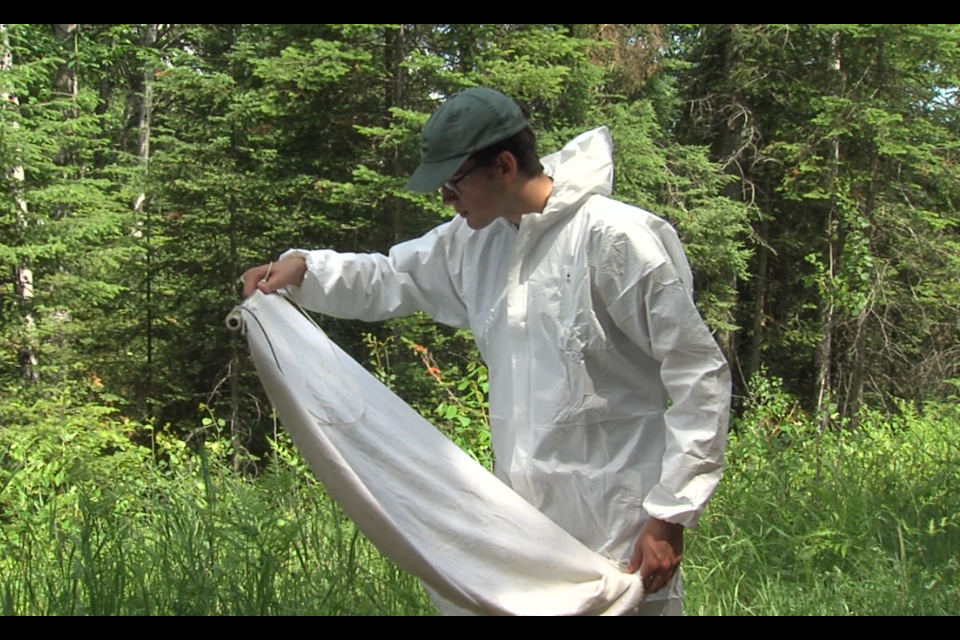THUNDER BAY — In increasing numbers, the Thunder Bay District Health Unit has confirmed the presence of ticks with the potential to transmit Lyme disease in areas in and around the city.
Besides the city, blacklegged ticks (also known as deer ticks) have turned up this year at Lake Shebandowan west of the city, Oliver Lake south of the city, and to the north in Shuniah, among other areas.
One of the ticks from Shuniah was picked up at Wild Goose Park on a sheet dragged over the terrain as part of the TBDHU's active search for the creatures.
The number of ticks that have been discovered to date through the TBDHU's public surveillance program is also concerning.
"From the public, we've received 50 blacklegged ticks so far this year. Compared to last year, the numbers are way up. In all of last year we only had about 40," says Matt Bradica, who works in the program.
In an interview with Tbnewswatch, Bradica also noted that most ticks are typically turned in to the health unit in the fall.
The trend this year, he said, "is definitely worrisome."
As the summer progresses, Bradica said, TBDHU will also be searching for blacklegged ticks in the nymph stage.
Adult ticks are active until about mid-July when they start to die off, whereas nymphs—in the pre-adult stage—are much smaller but still pose a risk to humans.
Adults measure about 2.0 to 2.5 millimetres, while nymphs are roughly half the size.
"They're about the size of a poppy seed, and they can carry and transmit Lyme disease," Bradica said.
Both adult and nymph-stage ticks use a strategy for latching on to animals or people that's known as "questing."
"It's where they go up tall blades of grass or on the leaves of shrubs. They just wait for a host to walk by, and as soon as they detect the carbon dioxide coming from the host, they raise their front legs up in the direction of the host and just climb aboard and look for a spot where they can bite."
TBDHU's ongoing active tick search program last year found blacklegged ticks in both the spring and the fall in a particular location in the city, which confirmed that there is a local, reproducing population that's able to survive the winter.
Having proof that blacklegged ticks are permanently established in Thunder Bay, the Ontario health ministry then designated the city as a risk area, making it mandatory for doctors who see patients with Lyme disease symptoms to report these cases to TBDHU.
Ken Deacon, coordinator of TBDHU's vector-borne disease program, said anyone who believes they have been bitten by a blacklegged tick can check the health unit's website for information about symptoms.
"If you have Lyme disease, you should see a physician and be treated, because it's really easy to cure in the early stages, and gets to be really awful in the later stages," Deacon said Wednesday.
Information about protective measures individuals can take to reduce the risk of being bitten is also available on the website.
